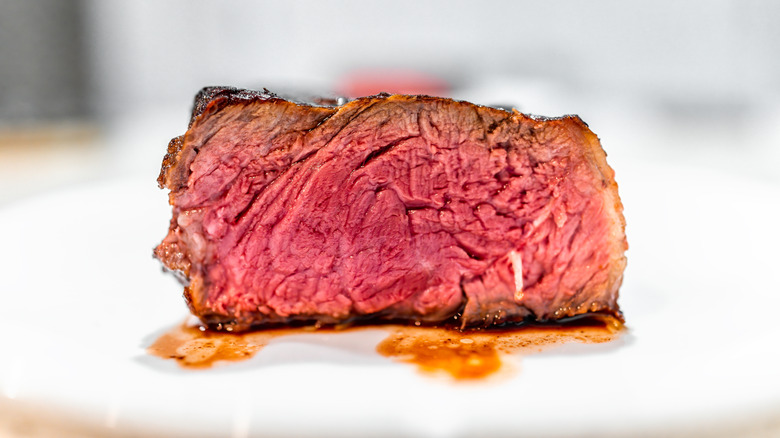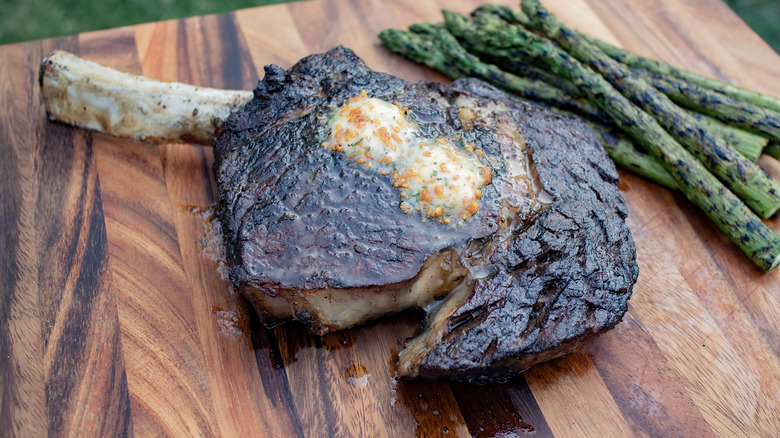What Is Pittsburgh Rare Steak And What Makes It Unique
People order their steaks in all different ways, with the most common styles being medium, medium-rare, or medium-well. However, can you imagine a steak so charred on the outside that its crust looks nearly as black as coal, yet when you cut into it, the center remains barely warm, almost raw? That's the essence of the "Pittsburgh Rare," and contrary to all the steak myths out there about rare steak consumption, people who eat it love it.
There are a lot of stories floating around about the origin of the way its cooked, from steel mill workers who needed to cook their food quickly, so they threw it on a blasting hot surface, to a restaurant that allowed selection of a cut from a live cow, seared it high and fast, and then served it while the meat still had the internal temperature of the cow's body. There's also the theory that someone just burnt a steak in a restaurant, and explained it away as that's what they meant to do. That last claim is heavily disputed; those who are professional culinary experts say that the harmony of flavors that come together from an expert sear and teetering the line of rareness on the inside is intentional — not accidental.
What grabs your attention about the Pittsburgh Rare apart from other rare steaks is the intensity of that crust. Traditional rare focuses on keeping the middle red and juicy, but doesn't emphasize the exterior. Pittsburgh Rare reverses the balance, as the focus is moreso about the aggressive sear that creates a smoky, bitter edge while locking in the meat's natural tenderness inside. You end up with a dramatic contrast of texture and taste that many say is the only way to eat a steak.
How to cook the Pittsburgh Rare steak without losing its character
Knowing what a Pittsburgh Rare is only gets you halfway there — the real challenge is pulling it off in your own kitchen or backyard. The style depends on extreme heat, and that's not something most weeknight grills are set up for. A charcoal fire that's been allowed to fully ignite, with flames licking just under the grate, gives you the intensity you need. Gas grills can work too, but it helps to preheat them longer than usual and keep the lid closed so the heat doesn't escape when you open it for searing. Cast-iron pans heated until they're smoking hot are another option indoors, though you'll want good ventilation because the process produces a lot of smoke.
Cut selection makes an enormous difference as well, because you have to pick the perfect steak. At least two inches thick is what you're going for, since anything thinner will cook through before the outside has a chance to develop that signature char. Ribeye, sirloin, and strip steaks are common choices, but the real requirement is marbling; a leaner cut won't hold up well when the surface gets scorched. Once the steak hits the heat, timing is usually about two or three minutes per side. Any longer and the inside starts edging toward medium, and you've lost what makes this style unique.
Since the outer crust is so assertive, Pittsburgh Rare benefits from thoughtful pairings. Something bright or acidic on the plate, like a sharp salad dressing or even quick-pickled vegetables, helps cut through how rich it is, while not taking away from tasting it altogether. Your goal should be balance from a steak that's unapologetically bold, matched with sides that refresh rather than compete.


